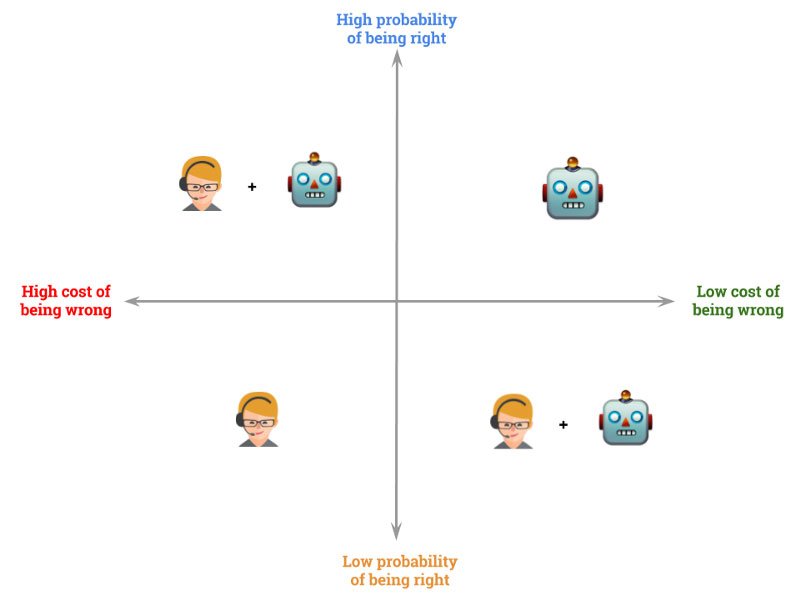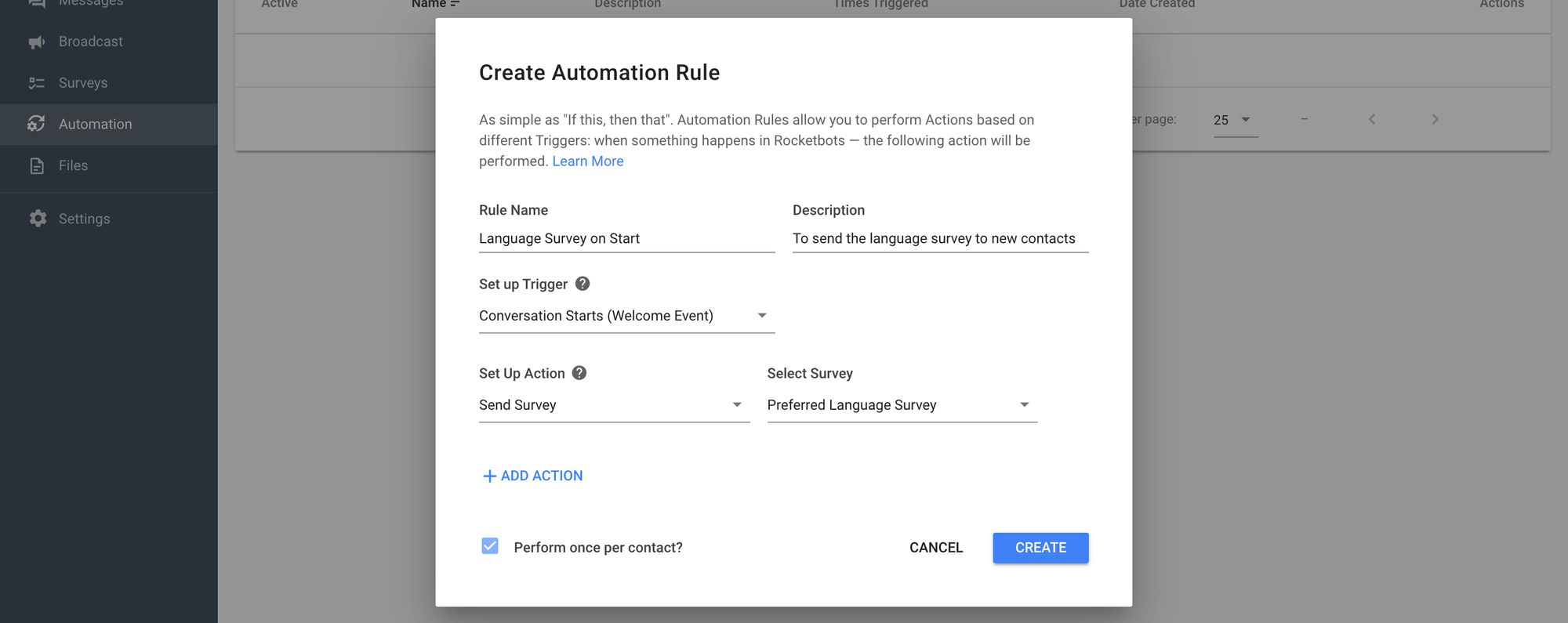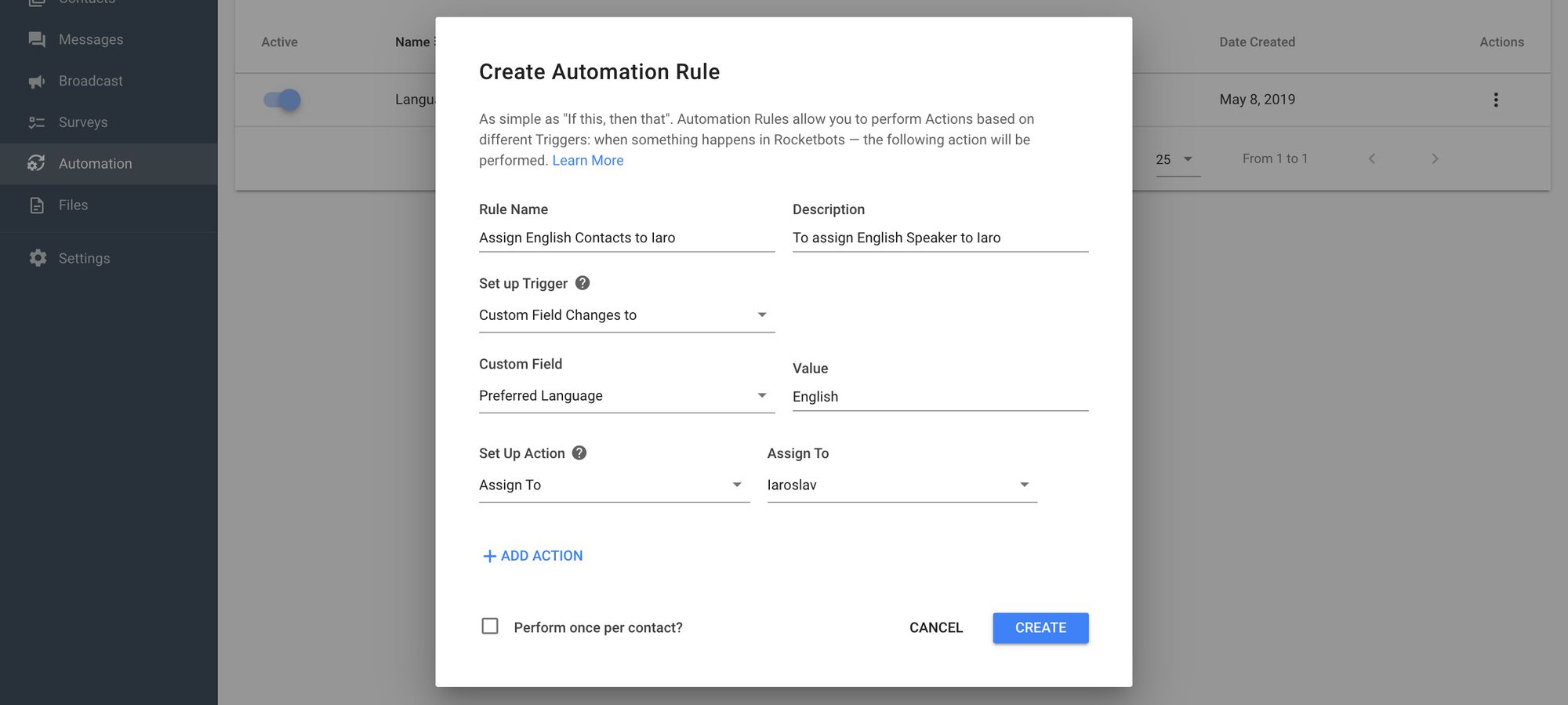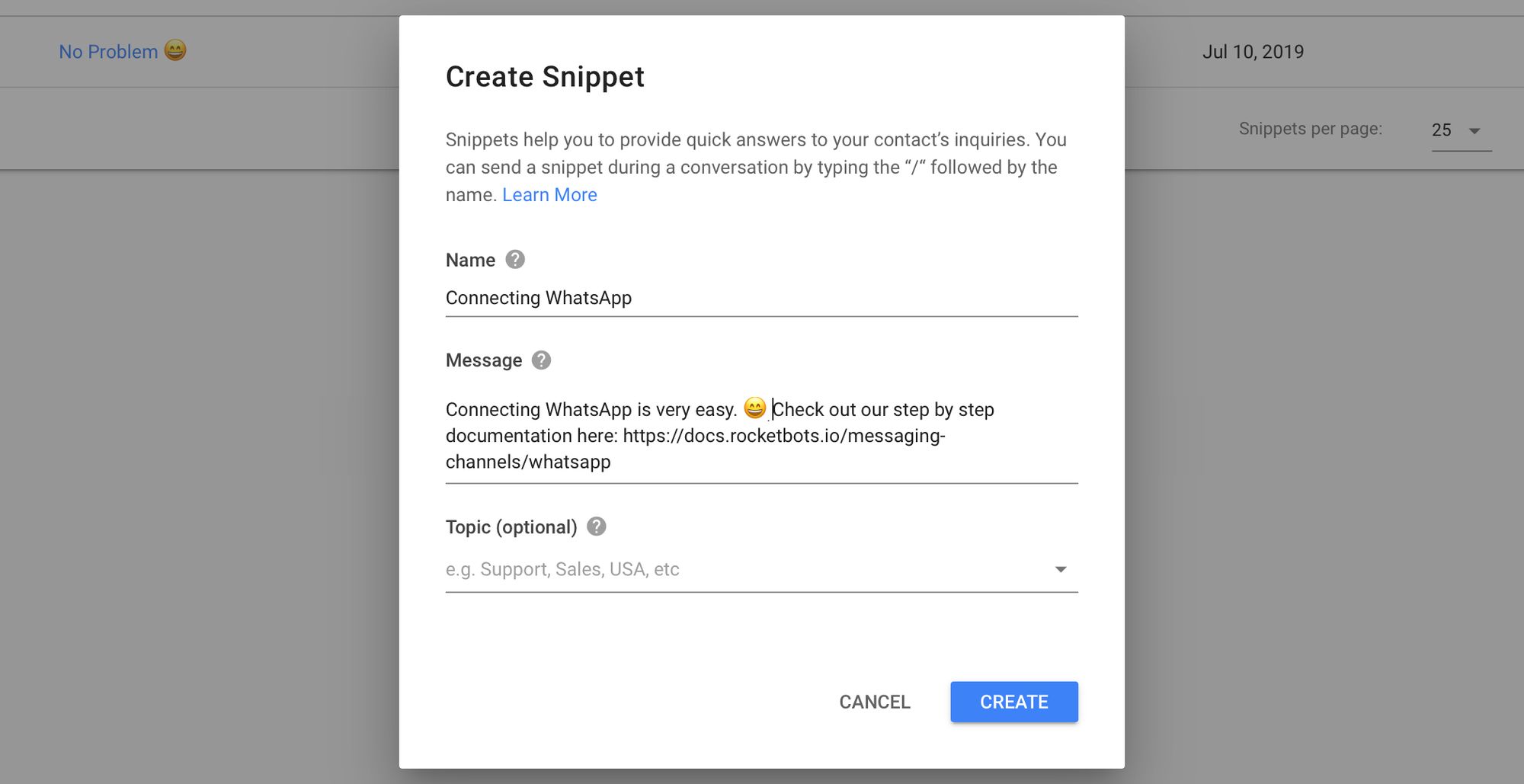
Whether you are looking for Facebook Chat Automation, to Automate WhatsApp Messaging, to automate canned responses or automate chats of any kind the tenets of message automation are always the same. If you over automate a conversation, your customer service will suffer, if you under automate it's going to cost you a lot. This guide helps get message automation just right.
As with any endeavor that has high potential cost savings, the process of message automation is not one that you can just flick on and off like a light switch. It is a process of trial, error, and optimization. It is essential to go through this process because it is easy to disappoint a user or a customer in the real-time messaging environment.
We've developed five necessary steps to follow. To follow these five steps you'll need:
Customers or users who'll chat with you in the messaging app channel
1. Chat Automation: Evaluate Conversations
The first step to message automation is understanding the chats your customer service representatives and salespeople are having with your customers or users.
The goal of this step is to get a vague idea of the potential pay off you can achieve by automating some conversations.
For the initial research, ask the business development team, sales department, and customer representatives for anecdotal data. You'll be surprised how bothered employees can be about repetitive messaging.
Record the answers employee's give to these questions:
What are the most common first messages or questions they receive in the chat? We'll call these onboarding messages.
What are the most common problems your customer support team responds to for customers or users that your company has already chatted with? We'll call these Frequently Asked Questions (FAQs).
How often are the responses given for either onboarding messages or FAQs exactly the same?
At this stage, you'll have a pretty good idea of which topics you should conduct more research about by looking at past chat conversations. Past conversations will help you understand where automated onboarding and automated canned responses can be of use.
2. Chat Automation: Identify Opportunities
The second step to practical chat automation involves finding parts of conversations that you can automate using chat automation rules (for Onboarding Messages) or AI (for FAQs). To do so, find sample chats of onboarding messages & FAQs that you learned about from your team in Step 1.
The best way to find samples of onboarding messages and FAQs is to look directly at chats. You may try to go through emails to find this information, but email conversations will not be useful because the way people write in a real-time chat is vastly different from email.
If you've got live chat set up on your website, checking those conversations is an excellent place to start. If you have messaging app business accounts set up already, you'll be able to find records of your chats in the following places:
WhatsApp: all conversations are recorded on the WhatsApp Business App
WeChat: all conversations are recorded on the WeChat Official Accounts Platform
Line: all conversations are recorded in the Line@ 1 to 1 chat app
Once you've got about 10 to 20 examples of chat conversations for each onboarding message & FAQ you'd like to automate you're ready for the next step.
Turn customer conversations into business growth with respond.io. ✨
Manage calls, chats and emails in one place!
3. Chat Automation: Onboarding Flows
For most businesses, we see a few questions or topics that are so prevalent that it's best to preempt it for all new contacts (subscribers).
An onboarding automation helps to welcome new contacts into the conversation. It can be a message to educate a contact about an issue or a question that the contact can answer that lets you help them faster.
When choosing what kind of message to send or question to ask with your first onboarding automation consider the chat automation matrix below.

Make sure to start automating messages where you have a high probability of being right and a low cost of being wrong.
Our first experiment was just one simple question. What language do you prefer to chat in English, Spanish or Chinese? It's very easy to make a simple onboarding automation like this for your own company.
1. Navigate to Settings > Add Field and create a field with the contacts preferred language.

2. Navigate to Surveys > Add Survey and create a survey to ask a contact their preferred language.

3. Navigate to Automation > Add Rule and Create a Rule that sends the survey to the contact when they start the conversation.

4. Navigate to Automation > Add Rule and create a rule that assigns the contact to one of your Respond.io platform users depending on the language they choose.

That's it. You've created your first automation.
A word of caution, we tried our first experiments with onboarding automations in a closed environment that didn't include our real users. However, we quickly learned this method wasted our teams time (they were the testers) and usually didn't reflect on what actually happened in the real world. Experiment with very light automation first, like the one we described above and test it on your real contacts.
If you're ready for something more complex, we've created also created a guide to complex onboarding automations.
Now that you've done something to automation contact onboarding, let's created some canned responses and automate to canned responses.
4. Chat Automation: Automating FAQ
Once you've gone through your chat logs and have a good idea of your frequently asked questions, time to make canned responses. This is a test to see if your responses can be automated. If your agents find your canned responses sufficient, then they work.
In our case, the most common questions are about connecting channels. People will ask, how can I connect WhatsApp to your platform? How can I connect Line to your platform? The answers we give to these questions are simple, we point them to the documentation.
The best way for you to get started with testing out your canned responses is to create Snippets on the Respond.io platform. Snippets is our name for canned responses, Snippets you create can be used by agents to answer questions.
To create a Snippet navigate to Snippets > Add Snippets.

Snippets have a name, a message, and a topic. The name is used to bring up the Snippet using the "/" command in the messaging module. The message is the text that is sent to the contact. The topic is optional but helps keep things organized once you have many Snippets.
To use the Snippet command navigate to the Messages Module > type "/" > select the Snippet by typing the name or using the up & down arrows > press Enter.

Using Snippets is just as easy as using canned responses on any other platform. Once you’ve created 10 to 20 Snippets you think will work, time to let your agents give them a try. This is an important step before you embark on FAQ automation.
5. Chat Automation: Adding Dialogflow
Once you’ve got 10 to 20 Snippets working well with agents this means you’re ready to add FAQ automation into the mix. This is where a Natural Language Processor (NLP) like Dialogflow comes into play.
Don’t worry about the fancy name. NLP is software that uses a little AI to determine how close one phrase is to another one. Every time someone asks a question, it will compare it to the questions you’ve added for that canned response.

If you’re interested in learning more about using Dialogflow for some FAQ automation with respond.io please check out our post on using the platform together with Dialogflow. There are lots of tips and tricks to try out.
6. Analyze, Optimize & Implement More Message Automation
Nobody expects you to get it right the first time. Chat automation is a trial and error process that requires organizations to test better variants of their answers repeatedly and analyze consumer feedback to automated chats to improve their design. You'll want to optimize your onboarding and improve how you group information in Snippets to truly automate canned responses.
The key to a successful chat automation system is the ability of the organization to record, evaluate, and improve, based on their findings.
Turn customer conversations into business growth with respond.io. ✨
Manage calls, chats and emails in one place!
FAQs about chat automation
How do I get started with chat automation on respond.io?
1. Define Your Goals
Clarify what you want to automate — FAQs, lead capture, support flows, appointment booking or routing.
Identify your audience and channels, and choose a consistent tone for your automated messages.
2. Use Respond.io’s Automation Tools
Respond.io provides everything you need in one place:
Workflows for building no-code automations
AI connectors (Dialogflow or LLMs) for natural language replies
Make.com, Zapier or n8n for external integrations with CRMs, booking systems and more
All automations work across every connected messaging channel.
3. Build a Simple First Flow
Start small:
Trigger when a customer messages you
Send a greeting with quick-reply options (e.g., Pricing, Support)
Use conditions to send the right responses
Escalate to a human anytime via Inbox
This creates a smooth foundation before adding more complex logic or integrations.
4. Test, Launch and Improve
Test your automation inside respond.io, publish it once it works as expected, and refine it using workflow logs and advanced reporting to spot patterns or gaps. As your business grows, you can scale your automations effortlessly — all within the same platform.
What are the best chat automation builders?
1. Respond.io — Best for growing and enterprise businesses
A true omnichannel automation platform with powerful workflows, deep integrations, advanced reporting and scalability across teams and channels. Ideal for companies that need a unified system for marketing, sales and support automation.
2. ManyChat — Best for simple marketing automations
Great for small businesses automating Instagram, Messenger or WhatsApp, but limited for multichannel automation or enterprise workflows.
3. Chatfuel — Best for basic chatbot flows
Suitable for simple automated replies on social channels, though it lacks the robust automation and integration depth needed for larger organizations.
4. Other alternatives (Wati, SleekFlow, Intercom, Zendesk)
Useful for specific use cases, but often channel-limited or ticket-centric — and not as scalable or omnichannel as respond.io for end-to-end automation.
Further Reading
Want to learn more about chat automation? Read these articles for practical advice and examples.






































 Electronics
Electronics Fashion & Apparel
Fashion & Apparel Furniture
Furniture Jewelry and Watches
Jewelry and Watches
 Afterschool Activities
Afterschool Activities Sport & Fitness
Sport & Fitness
 Beauty Center
Beauty Center Dental Clinic
Dental Clinic Medical Clinic
Medical Clinic
 Home Cleaning & Maid Services
Home Cleaning & Maid Services Photography & Videography
Photography & Videography
 Car Dealership
Car Dealership
 Travel Agency & Tour Operator
Travel Agency & Tour Operator




